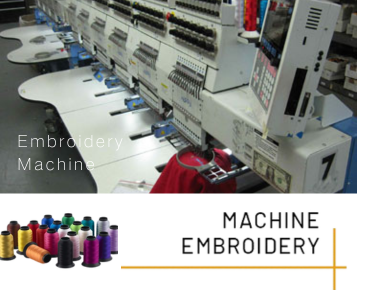Why Machine Embroidery Thread Keeps Breaking
Embroidery is a craft that combines creativity with precision, and one of the most frustrating issues that embroiderers face is thread breakage. Whether you're a hobbyist or a professional, understanding why your machine embroidery thread keeps breaking can save you time, money, and a lot of frustration. In this comprehensive guide, we'll explore the common causes of thread breakage and provide practical solutions to keep your embroidery projects running smoothly.
Understanding the Basics of Embroidery Thread
Before diving into the causes of thread breakage, it's essential to understand the nature of embroidery thread. Embroidery threads are typically made from polyester, rayon, or cotton, each with its unique properties. Polyester threads are known for their strength and elasticity, making them less prone to breaking. Rayon threads, while offering a beautiful sheen, are more delicate and can break more easily under tension. Cotton threads are sturdy but can fray if not handled properly.
Common Causes of Thread Breakage
1. Incorrect Thread Tension
One of the most common reasons for thread breakage is incorrect thread tension. If the tension is too tight, the thread can snap under pressure. Conversely, if the tension is too loose, the thread can bunch up and cause knots, leading to breakage. It's crucial to adjust the tension settings on your embroidery machine according to the type of thread and fabric you are using.
2. Poor Quality Thread
Using low-quality thread can significantly increase the likelihood of breakage. Cheap threads often have uneven thickness and weak spots that can easily snap during embroidery. Investing in high-quality threads can make a substantial difference in the durability and appearance of your embroidery projects.
3. Needle Issues
The needle plays a critical role in the embroidery process. A dull or damaged needle can cause the thread to fray and break. Additionally, using the wrong needle size or type for your fabric and thread can lead to problems. Regularly changing your needle and selecting the appropriate needle for your project can help prevent thread breakage.
4. Machine Maintenance
A well-maintained embroidery machine is less likely to cause thread breakage. Dust, lint, and debris can accumulate in the machine, affecting its performance. Regular cleaning and servicing of your machine can prevent these issues and ensure smooth operation.
Solutions to Prevent Thread Breakage
1. Adjusting Tension Settings
Start by testing different tension settings on a scrap piece of fabric. Gradually adjust the tension until you find the sweet spot where the thread runs smoothly without breaking. Remember that different threads and fabrics may require different tension settings.
2. Choosing the Right Thread
Opt for high-quality threads from reputable brands. These threads are more consistent in thickness and strength, reducing the chances of breakage. Consider using polyester threads for projects that require extra durability.
3. Regular Needle Replacement
Make it a habit to change your needle after every few projects or whenever you notice signs of wear. Using a fresh needle ensures clean and precise stitching, minimizing the risk of thread breakage.
4. Machine Maintenance
Schedule regular maintenance for your embroidery machine. Clean the bobbin area, remove lint, and oil the moving parts as recommended by the manufacturer. A well-maintained machine not only prevents thread breakage but also extends the life of your equipment.
The Role of Digitizing in Preventing Thread Breakage
Proper digitizing is crucial in minimizing thread breakage. Digitizing involves converting artwork into a stitch file that an embroidery machine can read. A well-digitized design ensures efficient sew-outs and reduces the stress on the thread. Companies like Eagle Digitizing specialize in creating designs that minimize thread breakage and sew out smoothly. Their expertise in embroidery digitizing ensures that each design is tested and revised to run perfectly on your machine【4:0†source】.
Advanced Techniques for Reducing Thread Breakage
1. Using Stabilizers
Stabilizers provide support to the fabric during embroidery, preventing it from stretching or puckering. This support reduces the strain on the thread, minimizing breakage. Choose the right stabilizer for your fabric and design to achieve the best results.
2. Experimenting with Different Threads
Sometimes, a particular thread may not be suitable for a specific fabric or design. Experimenting with different types of threads can help you find the best match for your project. Consider using specialty threads designed for high-speed embroidery to reduce breakage.
3. Adjusting Machine Speed
Slowing down the machine speed can reduce the tension on the thread, preventing breakage. While it may take longer to complete a project, the reduction in thread breakage can save time in the long run.
Looking Ahead: The Future of Embroidery Technology
As technology advances, the embroidery industry continues to evolve. Innovations in thread materials, machine technology, and digitizing software are making it easier to achieve flawless embroidery with minimal thread breakage. Companies like Eagle Digitizing are at the forefront of these advancements, offering cutting-edge digitizing services that cater to the needs of modern embroiderers【4:0†source】.
As you continue your embroidery journey, consider how these advancements can enhance your craft. Whether you're exploring new materials or investing in the latest technology, staying informed about industry trends can help you overcome challenges like thread breakage and achieve stunning results.
.png)

